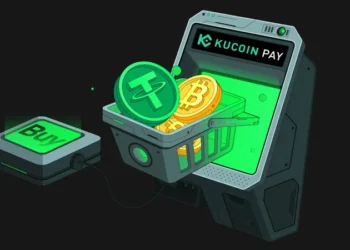In the final week of September 2024, decentralized exchanges (DEXes) on Solana saw a notable 45.74% increase in trading volume, surpassing $7.87 billion in total trades. This surge underscores Solana’s growing prominence in the DeFi sector, especially in comparison to Ethereum, which registered a modest 1.3% rise over the same period.

Solana has long been considered a strong competitor to Ethereum, particularly due to its ability to process approximately 65,000 transactions per second (TPS) at minimal cost. These characteristics have made Solana an attractive option for DeFi traders, many of whom seek alternatives to Ethereum’s high gas fees and slower processing times. While Solana has not yet overtaken Ethereum in terms of overall DeFi dominance, recent data suggests that it is steadily gaining ground.
Solana vs. Ethereum: Current Market Performance
From September 1 to September 30, 2024, Solana recorded a total DEX trading volume of $25.423 billion. Over $1.116 billion in trades were processed on the blockchain on September 30 alone, following a series of high-volume trading days since September 27. In comparison, Ethereum’s DEX volume was around $35.73 billion in the same period.

Solana’s total value locked (TVL) also surpassed $6 billion, driven by activity on top DEXs like Orca and Raydium. Ethereum, although maintaining a much higher TVL of $47.01 billion, saw slower growth in the same period.
Looking back over the past six months, Solana’s DEX trading volume has displayed exceptional growth, particularly in March 2024, when it processed over $60 billion in transactions, marking its peak performance for the year so far. Ethereum, on the other hand, saw a significantly higher trading volume of $69.67 billion in March, a 92.4% increase from February. However, since then, there has been a decline and very little growth.

Ethereum’s DEX transaction volume since January 2024. Source: DeFilama
One year prior, Solana’s transaction volume was around $40 billion, and its TVL was at a modest $338.82 million. In contrast, Ethereum had a daily trading volume averaging $211 billion in the third quarter of 2023, although this represented a 5.4% decline from the previous quarter.
Two years ago, Solana was still in the early stages of developing its DeFi infrastructure, with much lower transaction volumes and TVL compared to its current standing. So, while Ethereum still leads in overall DeFi activity, Solana’s rapid growth is beginning to challenge the older blockchain’s dominance.
Growth Drivers: Partnerships and New Tokens
The surge in Solana’s DEX trading volume can be attributed to several factors. The resurgence of memecoins played a pivotal role in boosting DEX volumes on Solana. On March 13, 2024, over 2500 tokens were reportedly created on Solana in 1 hour. All thanks to the Pump.fun token ecosystem, which has surpassed $1 billion in total capitalization and generated over $388 million in trading volume.
Solana’s ecosystem has also benefited from high-profile partnerships and launches, such as PayPal’s launch of its PYUSD on the blockchain. Jupiter, a popular DEX on Solana, was particularly very active. In June, it launched an upgraded version of its trading platform, Jupiter Terminal v3. In September, it acquired SolanaFM to enhance its data capabilities and also introduced Jupiter Mobile, a fee-free app developed in partnership with MoonPay, aimed at improving user accessibility through widely used payment methods like Apple Pay and Google Pay.
Is Solana Truly Reducing DeFi’s Reliance on Ethereum?
As Solana’s DEX volumes rise, it attracts more traders, developers, and projects to its ecosystem, boosting liquidity. This trend could lead to a shift in liquidity and innovation from Ethereum to Solana, creating stronger competition between the two blockchains. Solana may become the go-to platform for new DeFi protocols and dApps, intensifying the race for dominance.
Experts, including Anush Jafer of Mudrex, suggest that Solana’s superior scalability and lower fees could position it as a serious contender to Ethereum, particularly if Ethereum’s transition to Ethereum 2.0 continues to face delays.
Solana’s rise highlights the urgency for Ethereum to complete its transition to Ethereum 2.0, which promises to improve scalability and lower fees. Until Ethereum fully implements this upgrade, it risks losing users and developers to faster, cheaper networks like Solana.
However, Solana is not only challenging Ethereum’s dominance but also encouraging a broader evolution that benefits the entire ecosystem and crypto space. Making the DeFi market less reliant on Ethereum is the biggest thing that could come out of this. This rivalry fosters innovation and improvements on both blockchains; it would also push other blockchains like Binance Smart Chain and others to innovate further. For users, more choices for trading, staking, and liquidity provision mean better experiences and cost savings.
As the dynamics between these two blockchains continue to unfold, it will be fascinating to see how they adapt and evolve in response to each other’s strengths and challenges. This exciting thing is that the future of DeFi is becoming more vibrant and competitive than ever, creating opportunities for users and developers alike.
Disclaimer: This article is intended solely for informational purposes and should not be considered trading or investment advice. Nothing herein should be construed as financial, legal, or tax advice. Trading or investing in cryptocurrencies carries a considerable risk of financial loss. Always conduct due diligence.
If you would like to read more market analyses like this, visit DeFi Planet and follow us on Twitter, LinkedIn, Facebook, Instagram, and CoinMarketCap Community.
Take control of your crypto portfolio with MARKETS PRO, DeFi Planet’s suite of analytics tools.”





















